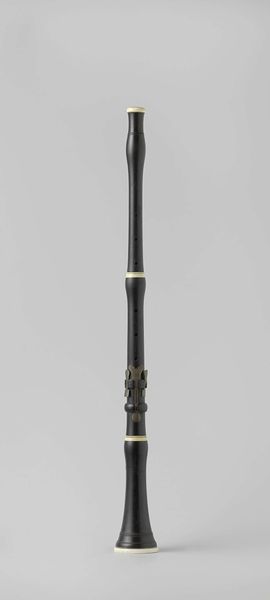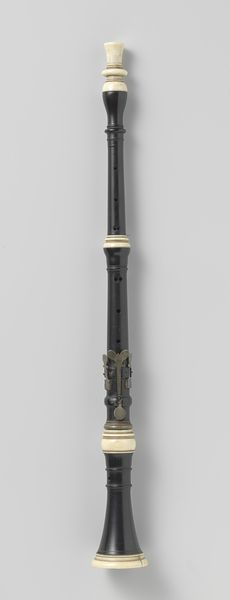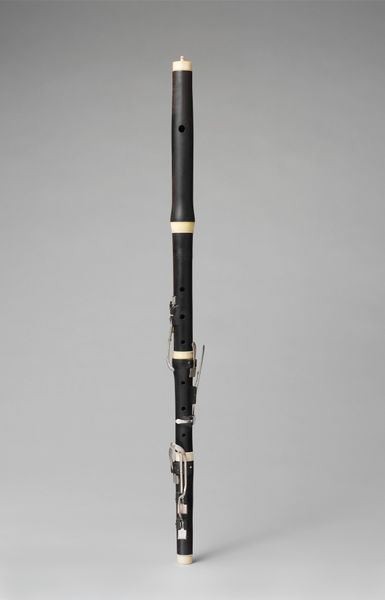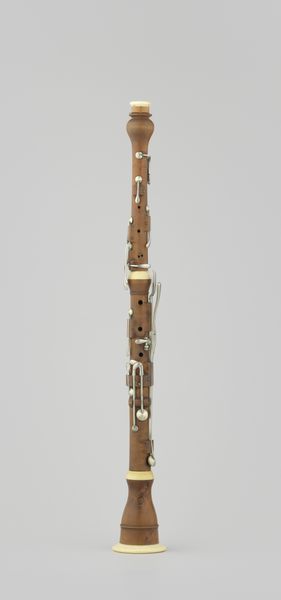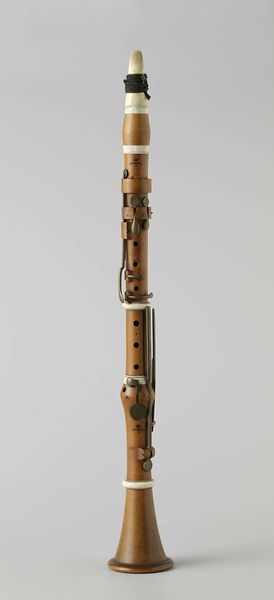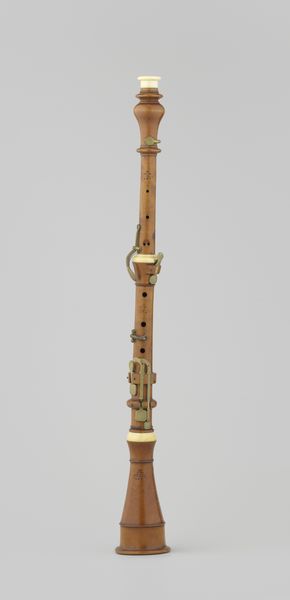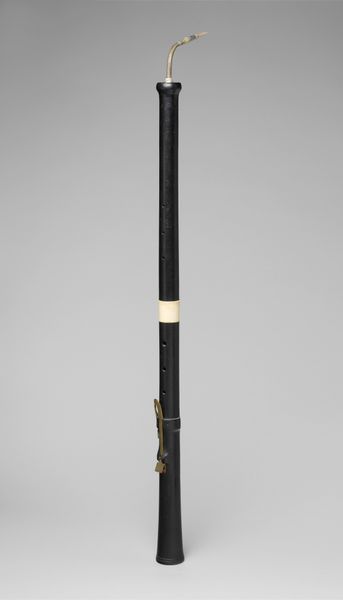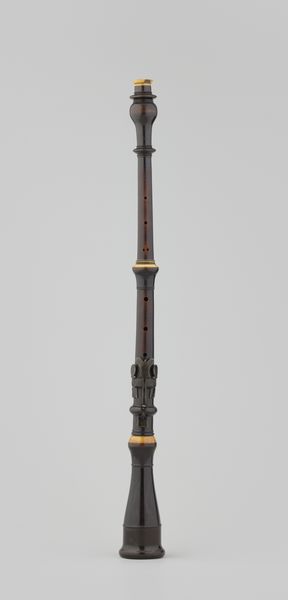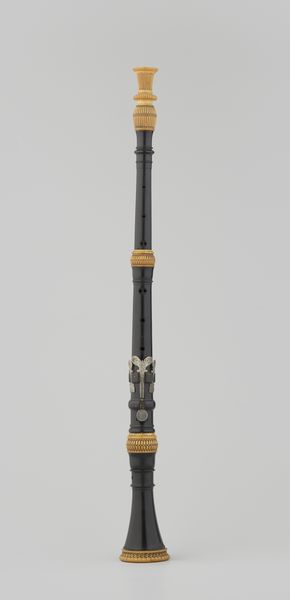
metal, wood
#
metal
#
wood
#
musical-instrument
Dimensions: length 53.8 cm, diameter 2.4 cm, diameter 6.1 cm
Copyright: Rijks Museum: Open Domain
Curator: Here we have an oboe, crafted around 1840 by the skilled hands at Schott Fils. Doesn't it strike you as a little severe? So black and upright... like a strict schoolmaster holding a lecture! Editor: I’m immediately drawn to its elegance, despite the seriousness you perceive. It's an oboe built with both wood and metal; such precision of assembly. Curator: Precision, yes, but think of the workshops. Imagine the artisans, the meticulous carving, the precise fitting of keys. A confluence of different skillsets! I’d wager there's as much elbow grease here as refinement. Editor: Absolutely. This object bridges so many different crafts, but it's important to see the whole process that produced a sound so many sought after during this era. An oboe player isn't able to show off as well on his own when compared to other musical groups within ensembles but it does not diminish their role as being a prominent component for these arrangements overall. Curator: But imagine the sounds this particular oboe might have produced. Who played it? Did it fill a grand hall or serenade a quiet garden? There's a certain soulfulness attached, that I simply can't place with process. Editor: And perhaps, too, the player's social position affected its production, if they paid more there is increased emphasis on beauty over functionality by those producing this piece from Schott Fils. These elements come to form a tangible class difference and should be analyzed whenever an artifact such as this exists and its value is realized Curator: Well, to think such sounds can last lifetimes... whether created in the homes of rich patrons or the public stages... I wonder who this particular artifact managed to serenade along its long existence. Editor: Well, from raw material extraction, from wood sourcing to metal shaping, all were necessary parts to make this object more than sound production—a symbol. Curator: Symbol indeed! I am so glad we were able to share with listeners just a little insight as to why this lovely artifact is more than meets the eye—or the ear. Editor: Agreed; hopefully visitors can reflect more deeply upon this beautiful Oboe beyond just the technical processes or performances it brings.
Comments
No comments
Be the first to comment and join the conversation on the ultimate creative platform.

